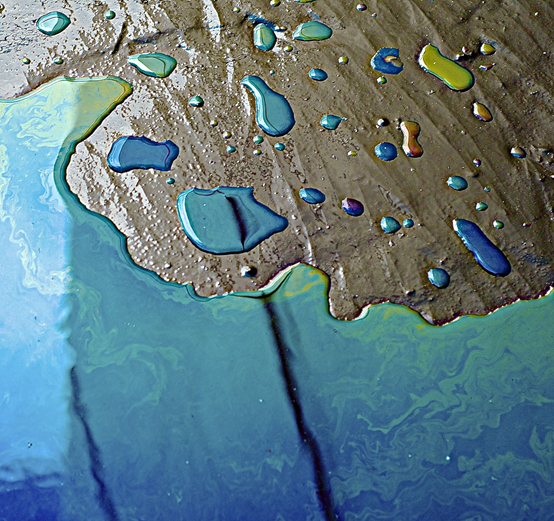A major oil company’s underground pipeline leaked oil, causing oil to come out of the village’s wells. In response to this pollution incident, China Biodiversity Conservation and Green Development Foudantion (CBCGDF) filed an environmental public interest litigation. However, as to how to deal with this pollution problem, there are still differences in society. I want to use this case to explain the three axioms of pollution control and the four principles of ecological restoration.
What are the three axioms? The first is non-proliferation, the second is not harming, and the third is full publicity.
After such a pollution occurs, how can we guarantee non-proliferation? For the oil in the underground pipeline to leak into the soil, we must first define the scope of the pollution. We must drill several wells in the surrounding area, take samples from these wells and see the state of the diffusion, and then based on this state to reduce diffusion.
The second is no harm. Now that the groundwater is polluted, what should be done to avoid harm? For this kind of pollution, some people say that groundwater should be treated. Wrong, the "no harm" here is to provide other channels of water for nearby villages. The treatment of contaminated groundwater is too costly and difficult, so we should provide nearby residents with alternative drinking water, and we should take this fundamental way of pollution control.
The third is full publicity. Regarding the local groundwater pollution situation, we should tell the surrounding people and the relevant agencies involved.
Therefore, the core problem of pollution control involved in this incident is that it should solve the alternative water supply, and then carefully monitor for a long time, monitor the spread of underground oil pollution and the scope of influence, and implement governance based on this monitoring. The treatment mentioned here refers to the provision of alternative water instead of pumping out the groundwater, washing it clean and reinjecting it. This is an absolutely unacceptable method of groundwater treatment. Of course, this method is still widely used. However, we know very well that this is completely wrong and is a treatment method for contaminated groundwater that should never been adopted.
When it comes to ecological restoration, there are four basic principles.
The first is the principle of economy. Decontamination after pumping out the groundwater or digging out the underground mud layer to clean the pollution, these practices seriously violate the principle of economy. These practices will bring ecological costs, because the water and chemicals used for cleaning up pollution come from natural ecology. The oil spill has caused the pollution of soil and groundwater in an area. Afterwards, a large amount of clean water and chemicals are used to remove this pollution. In particular, chemicals have brought double the environmental cost, which further damages the environment. The approach is absolutely unacceptable. Therefore, among the four principles of ecological restoration, the first is the principle of economy. We can only solve the restoration problem in a more economical way.
The second principle is the natural principle. We will allow the groundwater in this area to exist naturally. This is the most important principle of ecological restoration. So, how can it be solved naturally? Can it be solved? It will definitely be solved. Whether it is raining, the exchange of groundwater, and the various bacteria underground, these will gradually repair the oil (oil is also organic).
The third is the principle of finiteness. From a macro perspective, what does this principle refer to? Can this polluting company solve the problem in such a simple way? No. We have to take a macro view.
Polluting companies have brought such serious pollution to such a large piece of land. They have to equivalently remove the pollution from this land and turn it into the original clean land and groundwater. How much money will it cost? We have to calculate. There is no doubt that this will be a very large number, not a problem that can be solved by hundreds of millions. Then, the funds will be used for a wider range of work.
First, since similar oil spills have caused environmental, soil, and water pollution, we must use the funds to compensate and repair, and to avoid similar accidents in the upstream under natural conditions. In short, polluting companies should bear full responsibility, which involves penalties and fines. That is to say, the polluting company should fully bear the responsibility for restoration.
However, our local repairs are limited and must be implemented according to the three axioms and four principles. A large amount of funds will be used for broader environmental protection and similar issues. For example, there are more long-term water issues in this basin. We are not actually trying to turn polluted river water into potable water. For this, there is a fundamental mistake. We should ensure that the drinking water can be drunk and the water in the river can flow.
For places with environmental and ecological pollution, we need to find better places, more economical and more natural ways to restore them quickly. As for the unrecoverable and difficult to recover, we should close it and let it recover in a natural way and in a limited way. Only in this way can pollution, responsibility, and restoration be effective from a macro perspective. Only by doing this as a whole is ecological civilization.
We are totally wrong to repair based on a piece of land and a river, because doing such a repair in this place will incur a cost to the ecological environment. For example, if you want to wash this piece of soil, the water and chemicals needed in it are equivalent to a very huge ecological cost, which is equivalent to polluting a larger area. Because you produce pure water, you also need ecological costs.
I hope that through this example, I can clarify the local, industrial, and excessive practices that are common in the restoration process of ecological pollution control. This needs to be vigilant and stopped.
(This article is based on dictation and has not been verified by the speaker.)

(Photo credit: Pixabay)
Original Chinese article:
http://www.cbcgdf.org/NewsShow/4854/13711.html
By / Yao Jiahui (Intern) Modified / Niu Jingmei
https://www.paypal.me/CBCGDFChina
http://www.cbcgdf.org/English/ConfirmDonaTion/0.html


(Please indicate "I read CBCGDF" in the payment notes, thank you!)
